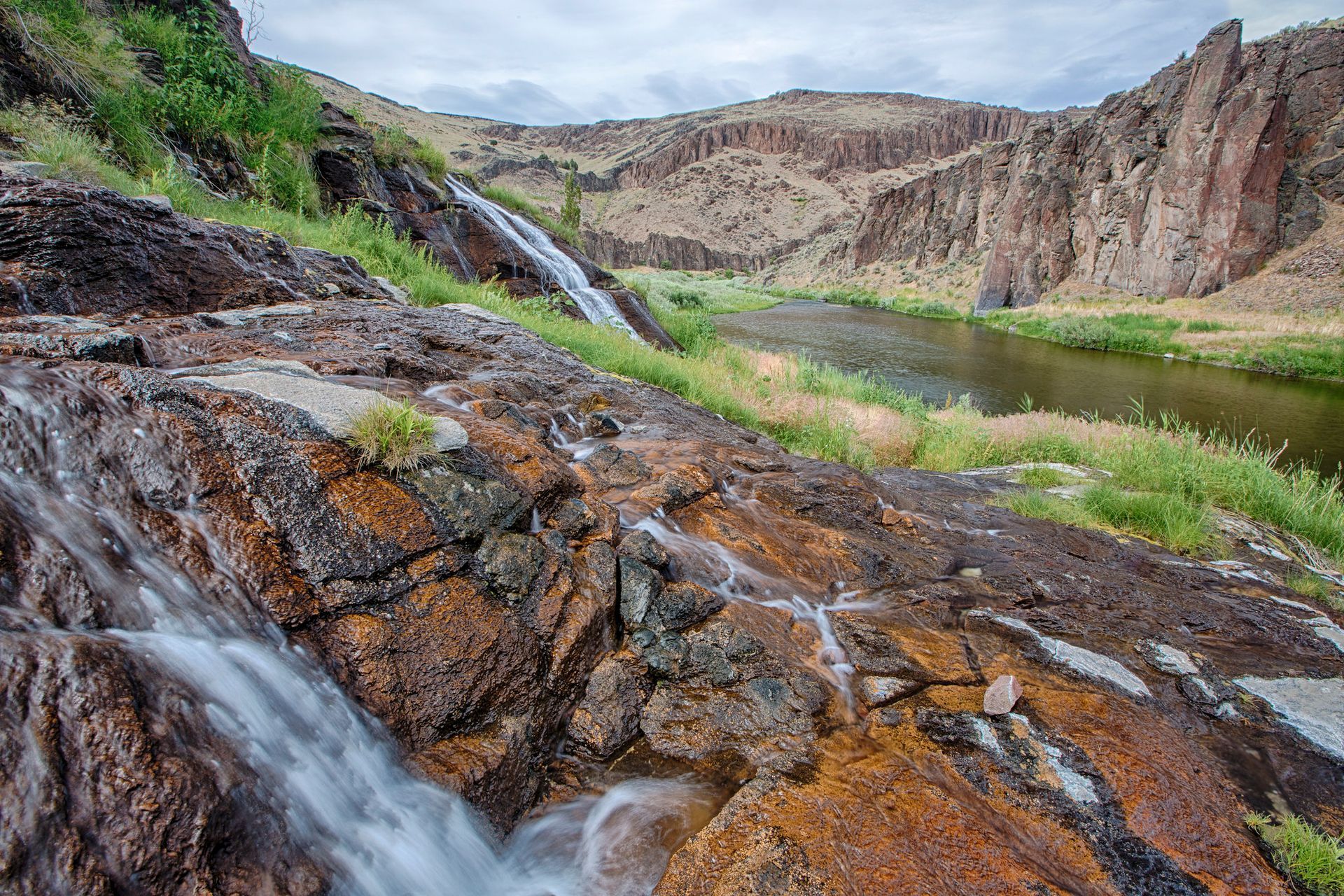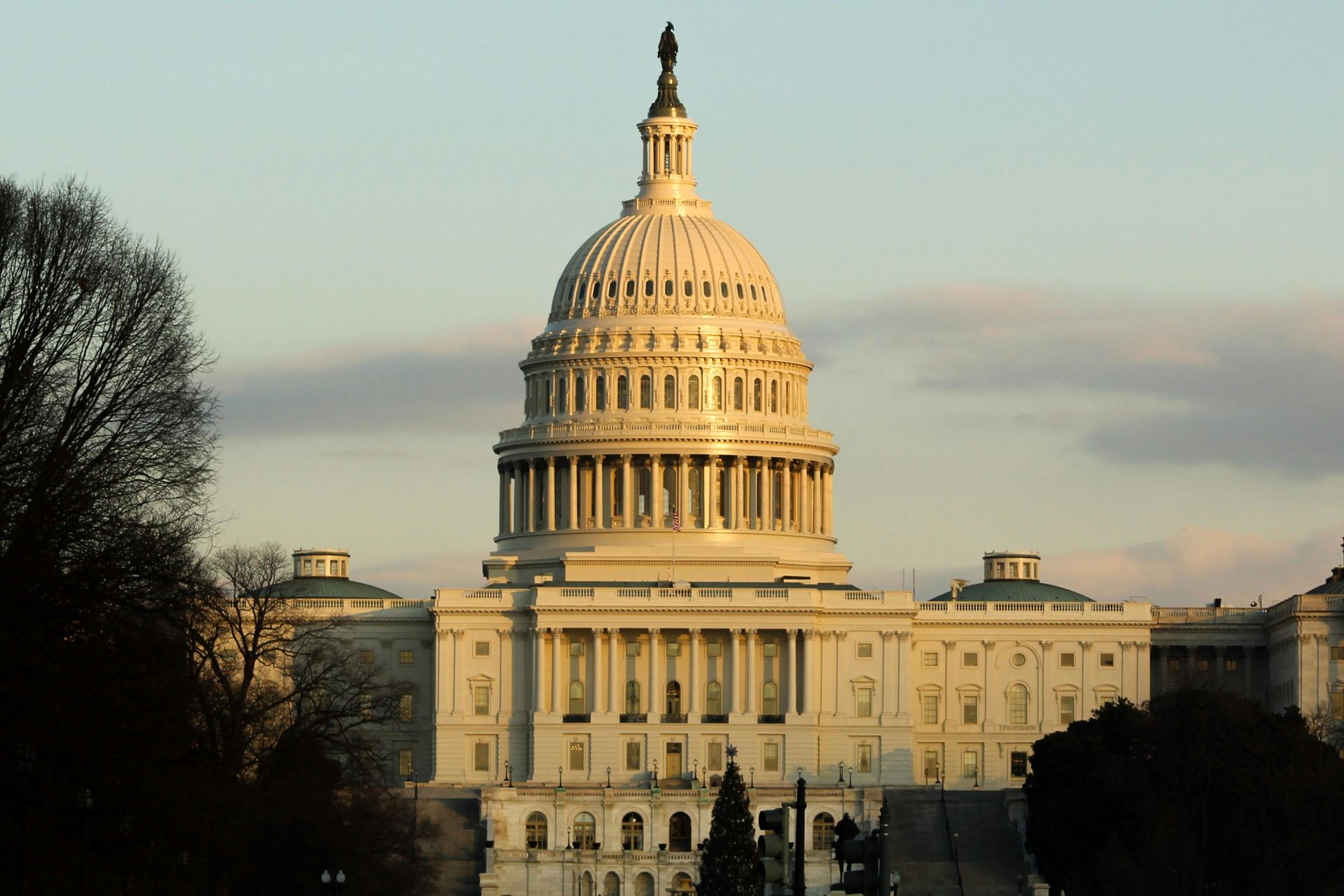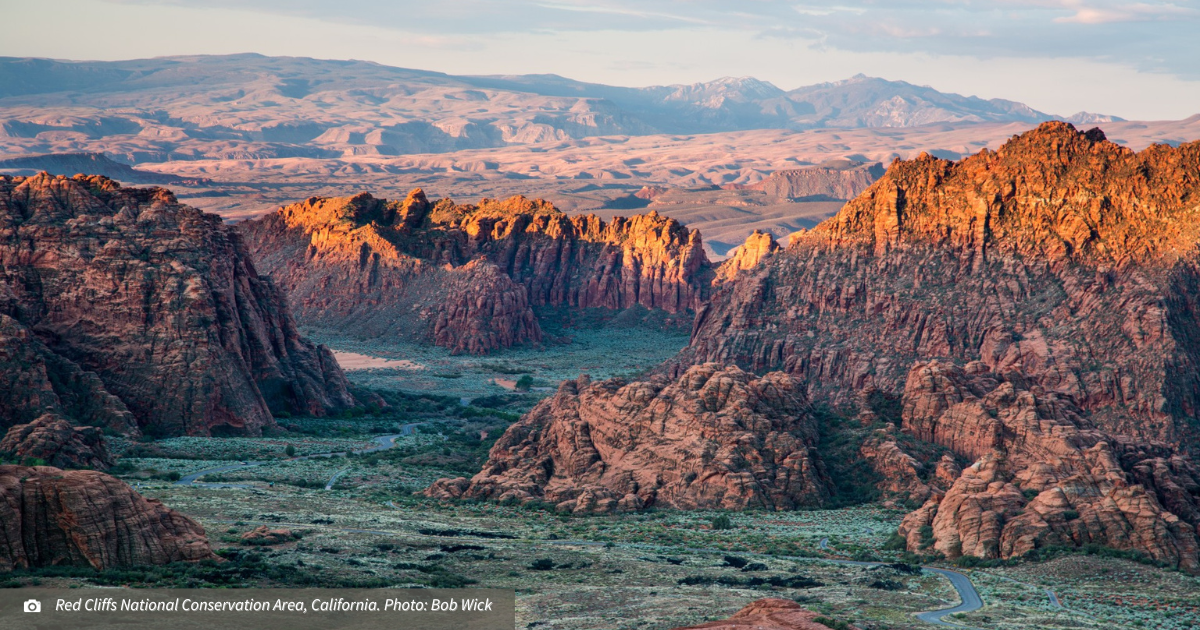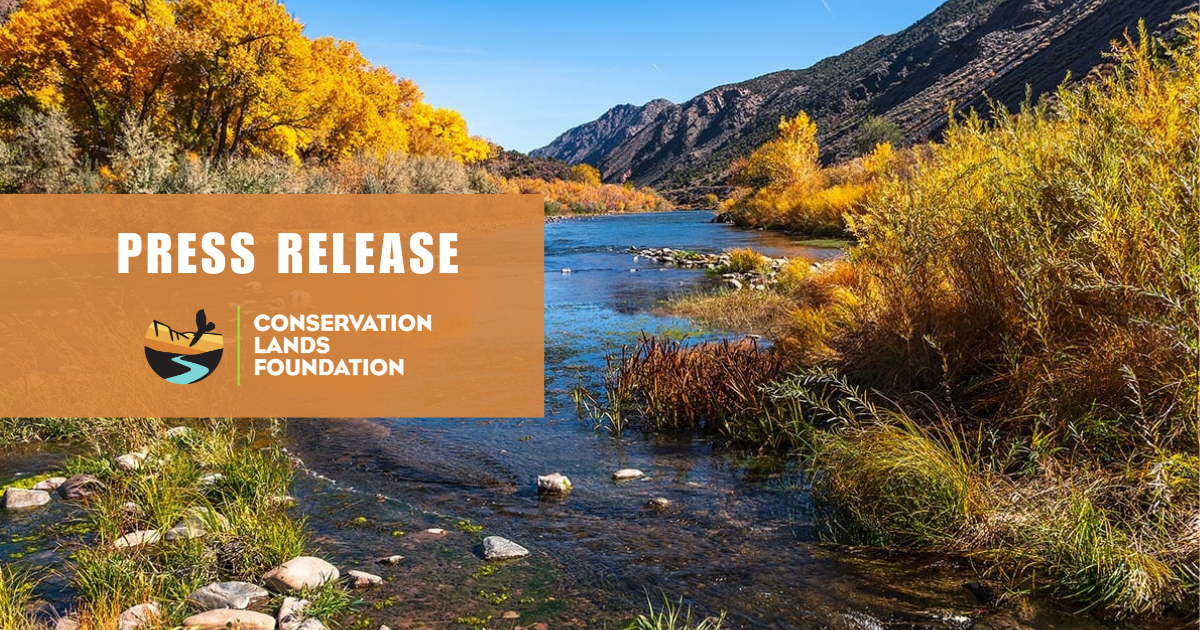BLM Rule to Balance Land Use Sees Overwhelming Public Support
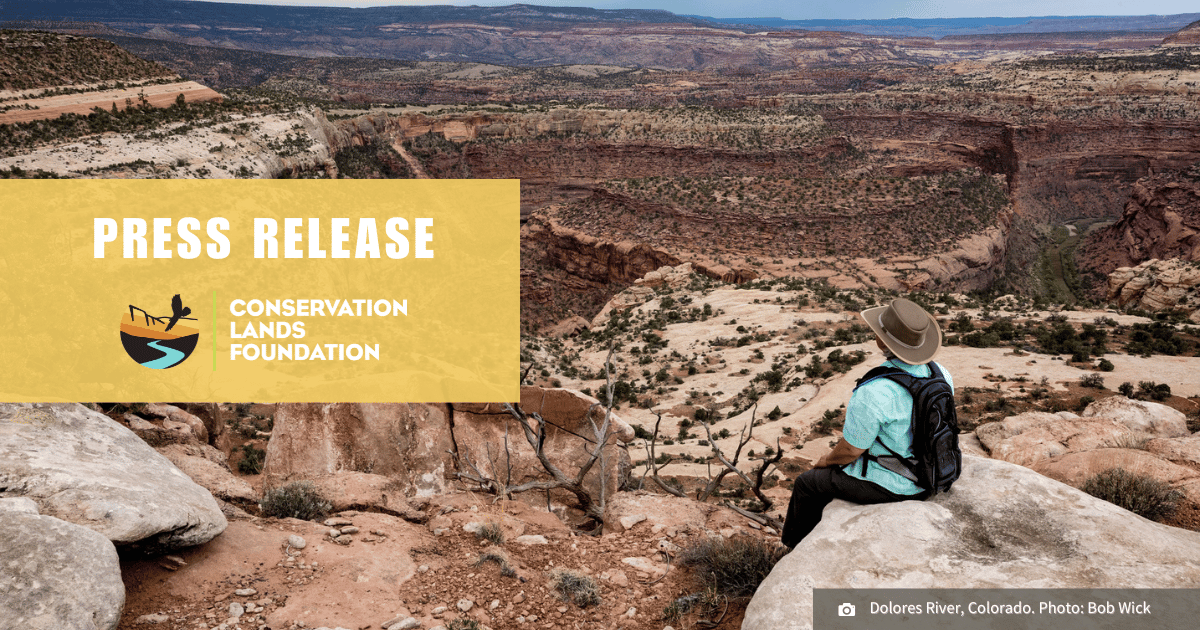
Washington - The Bureau of Land Management (BLM) today ended a 90-day comment period on the proposed Public Lands Rule, which will put conservation on equal footing with oil and gas development and other extractive uses - 92% of the comments supported the Public Lands Rule, and were submitted from all 50 states.
The Bureau’s proposal highlights the need for the agency to work with local communities to focus on the conservation of land, water, and wildlife to ensure future access to federal public lands while combating the growing impacts of climate change. It also encourages agency managers to work more closely with Tribal nations to ensure stronger cultural resource protection for ancestral lands across the West. The plan seeks to correct a system that has been wildly imbalanced. Currently, 90% of BLM land is open to drilling whereas only 14% are managed for conservation.
“The outpouring of support for the Bureau of Land Management’s Public Lands Rule shows that people across the nation care about healthy land, water and wildlife and want to see these values endure for generations. We can’t continue to delay such vital protections for the natural world,” said Jamie Williams, president of The Wilderness Society. “The United States should be a global leader and embrace public lands as a powerful solution to help address the climate and nature-loss crises. The fossil fuel industry has had outsized access to 90 percent of BLM public lands for many decades. The public has spoken and wants redress for that unfair, polluting advantage. It’s time we act accordingly.”
“After decades of prioritizing extraction and development on public lands over all other uses, the Bureau of Land Management is faced with lands that are severely degraded and vulnerable to wildfire and other climate-fueled events. This proposed Public Lands Rule elevates conservation as an equal use on public lands – on par with energy development, grazing, timber harvests or recreation—so that the health of wildlife, public lands and watersheds can be improved,” said Collin O’Mara, president and CEO of the National Wildlife Federation. “As directed by Congress, the agency is supposed to thoughtfully develop lands in the right places while also protecting natural and cultural resources. The Public Lands Rule will help drive investment into the restoration of BLM’s forests, grasslands and shrublands to ensure that future generations can continue to work and recreate on these lands.”
“The overwhelming support is reflective of recent polling that shows Americans, regardless of party affiliation, support national goals of conserving our nation's lands and waters. Yes- industry and industry allies opposed the rule in efforts to continue to monopolize and control management. But people in public lands communities support this rule because it is built with public land users in mind,” said Danielle Murray, Senior Legal and Policy Director at the Conservation Lands Foundation. “The proposed rule would put conservation on par with other uses and allow local input during the planning process. We thank the Biden administration for recognizing that our public lands are one of the nation's most valuable resources.”
BLM plays a critical role in the American West, managing approximately 245 million acres of lands that are vitally important to the conservation of water, wildlife, cultural resources, and our growing demand for access to the outdoors. With the Bureau of Land Management’s proposed rule, the United States has a chance to lead the world on addressing nature loss.
Throughout the comment period, an array of public constituencies expressed support for the Public Lands Rule, including:
Elected leaders from across the West have expressed support for the BLM’s Public Lands Rule.
Nearly four dozen Democrats asked Interior Secretary Deb Haaland to strengthen a plan elevating conservation on public lands.
Over 80 Colorado Local Officials Call for More Protections for Bureau of Land Management Lands.
New Mexico Local Elected Officials Urge Bureau of Land Management to Prioritize the Conservation of our Shared Public Lands.
The Salt Lake Tribune, Denver Post, Albuquerque Journal and other western papers have editorialized in support of the Public Lands Rule.
The Outdoor Business Community including The Conservation Alliance, Outdoor Industry Association and Outdoor Alliance support the Public Lands Rule.
27 Legal Professors and Scholars offer comments in support of the proposed rule.
Op-Eds from former BLM officials, local elected leaders, sportsman and business owners ran in papers across the west from California, Colorado, Utah, Nevada, Montana, New Mexico and Wyoming.
Reaction to the proposed Public Lands Rule
“People who visit, and communities that live close to, Bureau of Land Management lands know they include some of the nation’s most important watersheds and habitat for wildlife and fish. They know the beauty of the scenic expanses and the cultural significance of those places. Laws calling for conservation on those lands have been on the books since the 1970s. It is an overdue and welcome step to see our national policies updated to help land managers ensure better on-the-ground conservation outcomes all across the West.”
-James Kenna, Retired California State Director, Bureau of Land Management
“Our nation’s largest public lands agency, the Bureau of Land Management, has largely focused on resource extraction and commodity development for nearly 40 years,” said Yvon Chouinard, founder of Patagonia. “As the climate crisis worsens and nature disappears, the US government must prioritize the protection of land and water for future generations and Indigenous communities, and to conserve habitat for endangered species. Otherwise, we won’t have a planet worth living on.”
- Yvon Chouinard, Founder of Patagonia
“When used wisely, the Bureau of Land Management conservation mechanisms will support our local economies, tourism, and outdoor recreation as well as provide certainty for our rural and gateway communities so we can make long-term investments. The public meeting in Colorado will help the BLM ensure that the rule will modernize management policies to allow for increased recreational opportunities and access to nature.”
- Chaffee County Commissioner Keith Baker
“We are grateful that the Bureau of Land Management is holding these public meetings on the proposed Public Lands Rule. This rule is critical to ensuring that New Mexico’s and America’s cherished public lands are managed in a balanced manner so that wildlife and local communities will benefit now and well into the future. We look forward to working with the agency as it implements this long-overdue rule and applaud the BLM for continuing to expand collaboration with local communities and Tribes. As a whole, this important new rule helps ensure that public lands are given the responsible stewardship, resources and protections they so desperately deserve.”
- Rev. Andrew Black, the public lands field director at the National Wildlife Federation, founder of Earthkeepers360, and minister at First Presbyterian Church in Santa Fe
“The proposed BLM conservation rule will give a new tool to land managers, the public, and state and Tribal governments to engage in collaborative land stewardship that aims to caretake watersheds, reduce wildfire risks, improve habitat resilience, provide for responsible development, and expand recreation opportunities. The new rule is not a quick or easy fix but encourages robust dialogue—and hopefully action— between those who use our public lands. Multiple uses of land, water, and wildlife for generations to come is clearly worth discussion.”
- Jennifer Black, New Mexico Artemis Sportswoman
“With the world facing severe and urgent threats as a result of biodiversity loss and climate change, it’s time for the Bureau of Land Management (BLM) to better balance conservation and development in its management of public lands. The agency’s draft Conservation and Landscape Health rule is a major step forward, but the BLM must improve it to ensure durable outcomes, conserve important wildlife migration corridors, provide co-stewardship opportunities for Tribal Nations, and sustain economic benefit for communities throughout the West—one of the fastest-growing regions in the country. This rule-making is a once-in-a-generation opportunity to shape the future of public lands and the communities and wildlife that depend on them.”
- Marcia Argust, director for the U.S. conservation project at The Pew Charitable Trusts
“Our national parks are cultural and natural treasures that tell the story of America for present and future generations. Fully protecting parks is a vast responsibility that requires us to look beyond borders and to also protect landscapes surrounding parks. By ensuring BLM lands are conserved and managed in a way that comprehensively protects large landscapes, the proposed rule goes a long way toward achieving this critical vision.”
- Tracy Coppola, Colorado Senior Program Manager for National Parks Conservation Association
“BLM Lands across Oregon are the backbone of our local economies/ People come from near and far to hunt and fish, hike and bike, raft and camp, and more on these lands. And with these activities come critical dollars spent in our stores, our hotels, and with our outfitter guides. A strong BLM Rule will ensure that our local communities can continue to thrive and grow for generations to come.”
- Tim Davis with Friends of the Owyhee
“It’s essential that New Mexico hunters and anglers made make themselves heard in this rule-making process. Our public lands belong to all of us, and we stood side-by-side and need to insist that conservation have a seat at the table when we’re planning how to manage them now and into the future.”
- Jesse Deubel, executive director of the New Mexico Wildlife Federation
“The Bureau of Land Management has always been tasked with safeguarding the health of 245 million acres of public land for the ‘use and enjoyment of present and future generations.’ Unfortunately, too often the agency focused more on extracting from those lands instead of restoring them. The proposed Public Lands Rule will bring proper balance to land management and is great news for all who rely on public lands – from rural communities to hunters and anglers, and other outdoor recreationists.”
- Breanna González, Colorado field coordinator, Hispanics Enjoying Camping, Hunting, and the Outdoors (HECHO)
“The Bureau of Land Management has a once-in-a-generation opportunity to protect Oregon’s public lands, including the incredible high desert habitat. This remarkable area where we fish and hunt supports our communities and our way of life. It is time the BLM recognizes the cultural, economic, and environmental necessity of prioritizing conservation as our legacy and gift to future generations.”
- Liz Hamilton, the executive director of Northwest Sportfishing Industry Association (NSIA)
"The American people have made it clear that the Bureau of Land Management's proposed Public Lands Rule, bringing conservation to the same level of importance as other land uses, is well supported. This will mean that the BLM has another tool in the toolbox to best manage lands under its purview, according to the 'multiple use' mandate given by Congress. We at SUWA are glad to see so many people in support of common sense conservation that will be beneficial for the land, wildlife, and people who reside in Utah and across the West."
- Travis Hammill, DC Director for the Southern Utah Wilderness Alliance
“The world class hunting, fishing and outdoor recreation opportunities Bureau of Land Management lands provide New Mexicans, and our state’s culture, heritage and way-of-life are forever connected to these protected lands. In Santa Fe County, the destruction of petroglyphs within the Caja del Rio Area of Critical Environmental Concern (ACEC) should be a call-to-action for the Bureau of Land Management. It is time to ensure that no further damage is done, and I am hopeful a strong Public Lands Rule from the BLM can honor the stewardship of the Puebloan people and protect these areas for generations to come.”
- Anna Hansen, Santa Fe County Commission Chair
“As a proud New Mexican and public lands advocate, I am thrilled to see the overwhelmingly positive response to the new Public Lands Rule, which prioritizes the protection of our public lands, cultural resources, and wildlife. This rule represents a significant step forward in our efforts to combat the growing impacts of climate change while preserving our cherished outdoor spaces for future generations. I am grateful for the tireless advocacy of our communities and tribal nations who have worked hard to ensure that these lands are protected and accessible to all. The BLM's renewed focus on conservation, recreation, and cultural resource protection is essential for the economic well-being of our rural communities and small businesses that rely on these lands. I am excited to see how this new policy will help us address the challenges of managing public lands in New Mexico and across the West, and I look forward to hearing from the public as we continue to refine and implement this critical rule.”
- Keegan King, CEO of Native Land Institute
"A strong rule can benefit wildlife in Colorado, by prioritizing protection of areas of public lands that wildlife call home. For example, the rule could help protect the most important habitat for Gunnison sage-grouse, a bird that is at risk of extinction and found only in Colorado and Utah. Gunnison sage-grouse are a favorite among birders who love to watch spring courtship rituals where males dance their hearts out to impress females. Elk, deer, songbirds, and many other wildlife species depend on the same habitat. This rule could help protect this crucial wildlife habitat by designating Areas of Critical Environmental Concern."
- Megan Mueller, Conservation Biologist with Rocky Mountain Wild
“Drought, wildfires, invasive species, and over-use have all contributed to the degradation of wildlife habitat. It’s time that conservation is put on equal footing as the other multiple uses on the lands and waters managed by the Bureau of Land Management so that habitats can be restored. The proposed conservation rule will provide a way for the agency to ensure public lands thrive for generations to come.”
- Suzanne O’Neill, executive director of the Colorado Wildlife Federation
“The BLM’s mission is to sustain the health, diversity, and productivity of public lands for the use and enjoyment of present and future generations. EcoFlight uses the aerial perspective to educate stakeholders about conservation challenges across the Western U.S., and from that bird’s eye-view over the years, we have witnessed too many BLM lands managed primarily for singular use only, such as fossil fuel extraction, and not available to the American public for recreation or sport or solitude. The BLM’s Public Lands Rule is an important first step for agencies to make balanced decisions that consider the needs of both current and future generations and give conservation equal footing with other land-uses. The proposed rule is supported by diverse Coloradans and elected officials, and will benefit our wildlands, wildlife habitat, and provide an important means for carbon sequestration in this changing climate.”
- Jane Pargiter, Executive Director of EcoFlight
“Over 120 local elected officials from Western states have called on the Biden administration to protect more Bureau of Land Management lands as part of the administration’s America the Beautiful initiative. We look forward to the BLM hearing about why the Public Lands Rule is so important to Westerners, and how it can conserve and protect our nation’s important public lands, wildlife, and waters in tandem with locally-led efforts to advance conservation across the West.”
- Anna Peterson, Executive Director of The Mountain Pact
“I’m encouraged to see BLM’s new Public Lands Rule, which prioritizes the protection of our public lands and natural and cultural resources. My home state of New Mexico has so many fragile cultural and natural resources that lie beyond significant protection from various types of development and encroachment. This new rule places conservation on a par with BLM’s other multiple uses and the timing is critical for so many threatened places and resources.”
- Paul F. Reed, Preservation Archaeologist, Archaeology Southwest
“Next 100 Colorado supports the proposed Bureau of Land Management rulemaking process; which includes a public meeting in Denver. This is a critical step the agency must take to prioritize balanced management practices in a just and inclusive way. For too long, the BLM has focused on extractive industries that negatively impact communities of color and disadvantaged communities. It is time that antiquated BLM land management policies are modernized to develop an inclusive conservation approach that prioritizes the health and wellbeing of communities and considers the values of communities who have been historically excluded. We hope this rulemaking will provide communities with the necessary tools to safeguard sensitive cultural resources, provide improved access to recreational opportunities, connect people to healthier landscapes, and protect communities of color.”
- Alma 'Rosie' Sanchez Co-chair, Next 100 Colorado
"As an outdoor business owner in Colorado, protected public lands play a critical role in my business and way of life. Protecting more of these BLM lands can help support local economies, local tourism industries and even local manufacturing like our Grand Junction-based outdoor brand while preserving our outstanding opportunities for recreation, including camping, hiking, paddling, hunting and fishing. Today’s public meeting is a great opportunity to encourage the Department of Interior and Bureau of Land Management should do all that they can to better conserve and protect our nation’s important public lands and waters. By doing so, they will provide opportunities for outdoor recreation, equitable access to nature, and safeguard the climate which will ensure that these important public lands continue to offer the unique recreational opportunities that bring millions of Americans to the great outdoors.”
- Kevin Timm, Co-Founder and Co-owner Seek Outside, a Grand Junction-based manufacturer of high performance lightweight tents, backpacks and wood stoves
“In New Mexico, we’ve seen devastating climate impacts on our public lands. Whether it’s drought, invasive species, wildfire, or over-use, many ecosystems are struggling and need to be safeguarded or restored. This proposed rule is long-overdue and will give the Bureau of Land Management new tools to ensure that our wildlife, our lands and waters, our sporting heritage, and rural traditional communities can thrive for generations to come.”
- Max Trujillo, San Miguel County Commissioner and Senior Field Coordinator of Hispanics Enjoying Camping, Hunting, and the Outdoors (HECHO)
“BLM Lands in New Mexico make up an important part of our local economy. People come from near and far to hike, bike, and more on these lands, and they spend their dollars in our stores, our hotels, and with our outfitter guides. Simply put, small, locally owned businesses like mine depend on BLM lands and we need to protect them. I am excited for New Mexicans to share with the BLM what these lands mean to them.”
- Ivan Valdez, Reel Life Santa Fe
"As a sportsperson who loves Colorado’s great outdoors, I stand in strong support of the BLM Public Lands Rule. Putting conservation on equal footing with oil and gas development will help boost our local economies, preserve wildlife habitat, and safeguard clean water. Today, Coloradans are coming together to let the BLM know that we want to preserve our way of life and ensure that future generations will always have access to our shared public lands."
- Brien Webster, public lands campaign manager at Conservation Colorado
“America’s parks and public lands are places of exploration and inspiration. Inappropriate development and activities on lands surrounding and connected to parks can directly impact park resources as well as visitor experience. The BLM’s vision provides a more balanced approach to conservation, development, and recreation. Parks and public lands are among the nation’s most iconic open areas of the West that drive tourism, offer refuge for wildlife, provide access to nature, and safeguard innumerable stories of human experiences on the land. Now is the time to save these critical places that are the backbone of a vibrant future.”
- Emily Wolf, New Mexico Program Coordinator for the Southwest Region of the National Parks Conservation Association
“Our nation’s protected public lands are tremendous assets to our Western communities. They play a critical role in our way of life and support our outdoor recreation and tourism economies, health, and well-being. They help make the communities where we live what they are while contributing to a healthier and better tomorrow for future generations. We must protect and restore more of these Bureau of Land Management lands and hope this rule-making process will be an opportunity for western voices to be heard.”
- Town of Truckee, California Vice Mayor David Polivy
“Many of our Western communities are being devastated by the impacts of the climate crisis. As a result, many of the areas important to Westerners and visitors are at risk of being unnecessarily degraded or lost, especially since many of the BLM lands in our communities are not permanently protected. We hope that through this rulemaking process, as the largest land manager in the nation, the Bureau of Land Management will play a leading role in protecting more of these lands and waters, and in turn, our communities for the future.”
- City of Flagstaff, Arizona Council Member, Jim McCarthy
